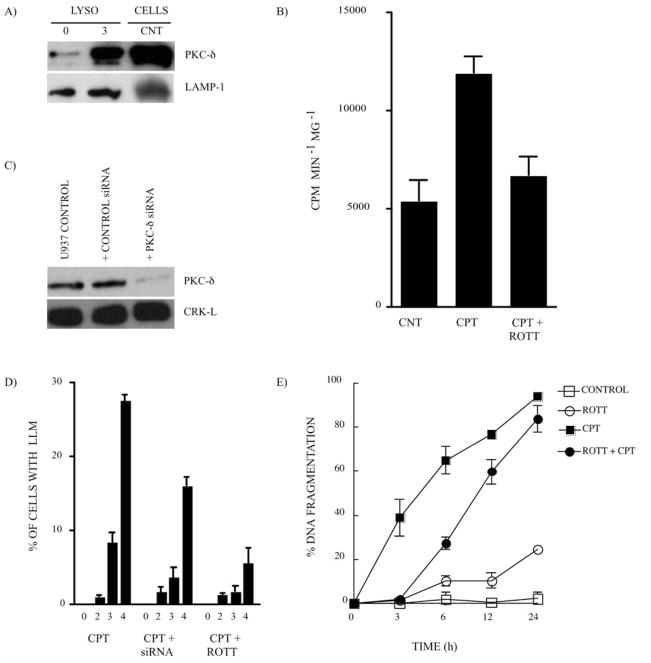Figure 2.
PKC-δ is required for LLM in CPT-treated U-937 cells. (A) Expression of PKC-δ (80 kDa) in highly-enriched lysosomal extracts from the control (CNT) and CPT-treated U-937 cells (1 μM; 3 h). Whole cell extract from the CNT cells is shown as the PKC-δ antibody control. LAMP-1 expression is the loading control. (B) PKC-δ activity monitored in highly-enriched lysosomal extracts from CNT and CPT-treated U-937 cells (1 μM; 3 h) in the absence and presence of the PKC-δ inhibitor, ROTT (3.5 μM). Bars represent the means of 4 independent determinations and error bars represent SEM. (C) The knockdown of the expression of PKC-δ by siRNA experiment. CRK-L expression is the loading control. The average of PKC-δ silencing efficiency in 3 independent experiments was 47±16%, based on densitometry analysis (data not shown). (D) LLM was monitored after CPT treatment (1 μM) in U-937 cells where PKC-δ was silenced by siRNA or PKC-δ activity inhibited by ROTT (3.5 μM). Bars represent the means of 3 independent determinations and error bars represent SEM. (E) The percentage of DNA fragmentation was monitored after CPT treatment (1 μM) in the absence or presence of the PKC-δ inhibitor, ROTT (3.5 μM). Data points represent the means of 3 duplicated independent determinations and error bars represent SEM.

